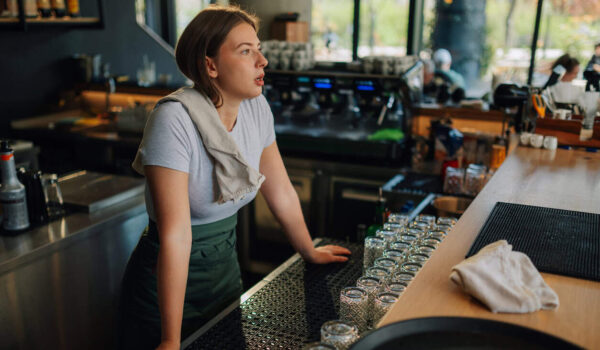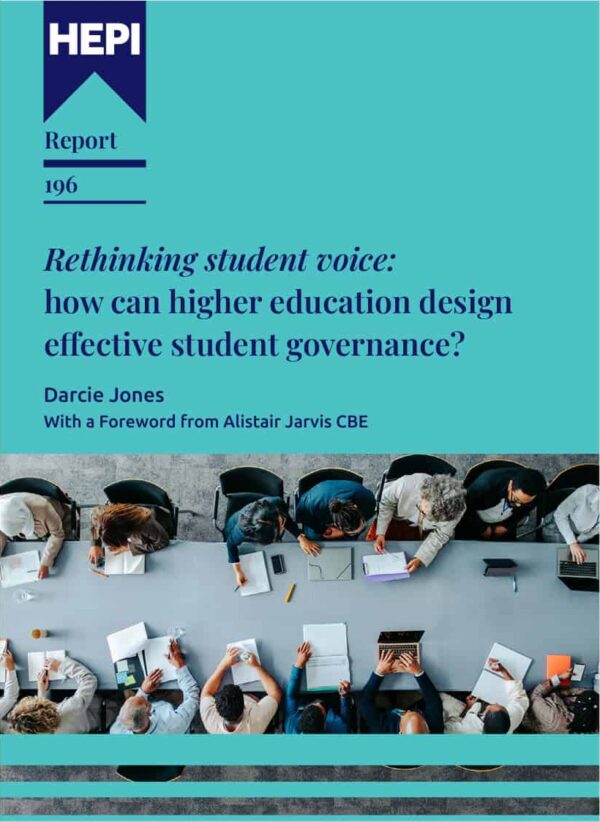Liberating the library to foster student belonging
By Dr Steve Briggs, Director of Learning and Teaching Excellence, University of Bedfordshire.
There have been growing discussions, and the emergence of corroborating evidence, related to how a sense of belonging affects not only the student experience but also attainment, retention and well-being. As per the Office for Students’ (OfS) 2025-30 vision, university environments play a critical role in the student experience and have real potential to impact on belonging. Accordingly, how environments can promote a positive student experience and foster belonging should be of utmost strategic importance to university leaders.
Given their central position, university library environments have a significant potential to positively (or negatively) affect students’ sense of belonging. Library spaces, learning materials (both physical and digital) and operational processes all have the potential to individually or cumulatively foster a culture of belonging.
I propose that there are traditional assumptions and modus operandi inherent with university libraries that may inadvertently be to the detriment of student belonging. While such practices are not necessarily straightforward to change (owing to issues around security and/or cost), here I consider more radical approaches that a library might employ to foster student belonging. Across all the following options, it is imperative that students are involved in re-imagination projects through facilitating co-creation and user experience design. This will serve to ensure that changes actually reflect student needs rather than becoming well-intentioned but misguided attempts to enhance belonging.
Minimising physical barriers. Libraries have traditionally used security gates to control access. This means that most students’ first experience of a library will be a barrier. For many, this can feel intimidating, send messages of limited trust and so potentially feel very unwelcoming. Navigating barriers may also be particularly challenging for some students with a disability. Historically, gates were seen to be an effective means of protecting valuable library collections. However, the use of radio frequency identity tags, CCTV and enhanced staff monitoring will potentially serve the same purpose. Further, gates may provide a false sense of security, given that any library that has opening windows could easily provide an alternative means for library resources to be illicitly removed. As a result of many university libraries increasingly moving to a digital-first purchasing, the size and status of physical collections is likely to progressively diminish. Where there are very high-value items, it might be more appropriate to restrict access to a dedicated section rather than the entire building. Removing gates could save money in terms of security gate management and maintenance costs; it is also in keeping with the approach being increasingly adopted by public libraries, such as Luton Central Library.
Relational customer service. Central to belonging are positive relationships between students and university staff. This may be at odds with transactional library models that focus on efficiency and rapid issue resolution, which can lead to students feeling like a number rather than individuals. Relational customer service is based on seeking to understand individual student needs (for example, is a student an employee, parent or carer?) to tailor service delivery accordingly. In doing so, they might provide a positive (and hopefully memorable) experience. As a result, students feel more valued, fostering ongoing engagement with library services. As per the Mental Health Charter, such approaches can help to combat feelings of loneliness and isolation. How library leaders can positively disrupt any prevailing transitional approaches and move to more relational working practices should be carefully considered when planning staff development.
Simplified navigation. Complicated library resource classification schemes may be intimidating for students and a barrier to feelings of belonging. Facilitating social annotation may serve to help students better understand and navigate a library collection. By way of an example, students might work together to annotate a journal article virtually and be encouraged to include signposts to relevant library resources. There are dedicated platforms available that facilitate social annotation, as outlined by Cornell University. Likewise, the location of physical library stock could create unanticipated issues around belonging. For example, housing certain subject collections next to social learning spaces might be more conducive to promoting belonging when associated courses have the greatest emphasis on group work. Including students in the cataloguing and organisation of library stock would serve to increase awareness of how design could better promote belonging.
Trust-based borrowing. Members have routinely needed to check learning materials out of a library. Whilst this is necessary in order to manage a library collection, there may be situations when students are very concerned about being seen to borrow certain resources or knowing their borrowing activities are being recorded. For example, a student might want to borrow materials that allow them to explore their sexuality but conflict with their religious status. In such instances, libraries may consider removing the need to check certain stock out of the library and instead operate on a ‘trust’ basis that materials will be returned.
Blended learning enabled. Historically, individual study carrels were synonymous with libraries. Over time, there have been reductions in carrels to accommodate social learning spaces. Given the emergence of blended learning and remote working, students are increasingly meeting remotely with lecturers and peers online outside of scheduled sessions. Practically, library users are increasingly going to need access to soundproof spaces (such as individual meeting pods) to be able to meet virtually with classmates or tutors without disturbing other library users. Such implications for redesigning library spaces have previously been explored by Research Libraries UK and will need to remain an ongoing consideration for library leaders. Without such facilities, students may feel unable to fully engage in blended learning while working in a library, in turn undermining their sense of belonging.
Child-friendly. Public libraries will typically arrange regular programmes of activities for children and their families, especially during school holiday periods. In contrast, universities have historically been reluctant to allow students to bring their children onto campus, including into library spaces. This presents a major barrier for those with parenting or caring responsibilities. Universities currently take quite different positions in terms of allowing children into buildings. Increasingly, institutions are starting to allow students to bring children into libraries for a short-term visit and with potentially some restricted access. In contrast, select universities, including Surrey and York, have introduced family study rooms to allow students to bring children onto campus for longer periods, but these are currently exceptions rather than the norm. Were such facilities to be staffed, this could provide work experience opportunities for students studying health and social care or primary education courses.
Commuter-ready. Traditionally, libraries have been concerned about students eating and drinking due to the risk of damage to stock and learning spaces. More recently, this position has started to soften. In light of the growing number of commuter students, access to kitchenette facilities on campus is increasingly in high demand. While examples of such provision exist within libraries, this is yet to become a standard feature of university libraries. Similarly, commuter students will need ready access to device charging stations and safe places to store items. Given the extended opening hours offered by libraries, these would be a logical place to host such facilities.
Wellbeing-centred. Examples of traditional university library learning spaces include quiet or silent areas, social learning zones, reading rooms, group rooms, presentation rooms and computer suites. There are examples of selected university libraries expanding the range of learning spaces to meet the wellbeing needs of users. One such example is the creation of sensory spaces, which may be restricted to students with disabilities or open to all users. A second example could be the provision of exercise equipment within libraries. Such provisions would promote positive well-being, a key condition for the belonging dimension of the ‘Live’ module of the Mental Health Charter.
Civic centrepiece. The Secretary of State has previously highlighted that enhancing the civic role of universities was a priority. This could involve opening up library spaces to members of the local community. In addition to civic duty, opening up libraries may also support belonging. The progressive increase in the number of students who have caring responsibilities may mean that students would feel more supported by their institution, and in turn gain a great sense of belonging, should they be able to being dependents with them to university libraries.
Considering the current financial challenges facing the UK higher education library sector, it is reasonable to expect that any of the aforementioned actions would need to be staggered, potentially over several years, within many institutions. Accordingly, library leaders should be developing long-term student belonging strategies with clearly identified and connected work plans to ensure that there is a belonging ‘golden thread’ that links phased library developments and, in turn, ensures a coherent future library experience.
I would like to acknowledge discussions with Janine Bhandol, Sofia Mavrogeni (Academic Liaison Librarians at the University of Bedfordshire) and Carly Ramirez-Herelle (Head of Library Services at the University of Bedfordshire) related to library futures which helped to inform this article.







Comments
Ola Uduku says:
fully agree with your deposition, there are some good examples of this practice in America and elsewhere around the world, particularly in the global south where the library is central to student life and study as core infrastructure (electricity, wifi, even basic sanitation) can be lacking. There was a good conference about the future of the library about 7 years ago at maybe unsurprisingly the British library
Reply
Add comment